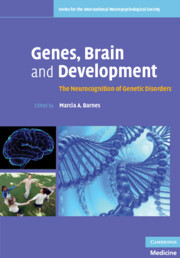Book contents
- Frontmatter
- Contents
- List of Contributors
- Preface
- Acknowledgments
- Section 1 Connecting genes, brain, and behavior in neurodevelopmental disorders
- Section 2 Genetic disorders and models of neurocognitive development
- 4 Language and communication in autism spectrum disorders
- 5 Language development in children with Williams syndrome: New insights from cross-linguistic research
- 6 Language in Down syndrome: A life-span perspective
- 7 Genetic disorders as models of mathematics learning disability: Fragile X and Turner syndromes
- 8 A developmental approach to genetic disorders
- 9 The use of strategies in embedded figures: Tasks by boys with and without organic mild mental retardation: A review and some experimental evidence
- Index
- References
4 - Language and communication in autism spectrum disorders
Published online by Cambridge University Press: 04 August 2010
- Frontmatter
- Contents
- List of Contributors
- Preface
- Acknowledgments
- Section 1 Connecting genes, brain, and behavior in neurodevelopmental disorders
- Section 2 Genetic disorders and models of neurocognitive development
- 4 Language and communication in autism spectrum disorders
- 5 Language development in children with Williams syndrome: New insights from cross-linguistic research
- 6 Language in Down syndrome: A life-span perspective
- 7 Genetic disorders as models of mathematics learning disability: Fragile X and Turner syndromes
- 8 A developmental approach to genetic disorders
- 9 The use of strategies in embedded figures: Tasks by boys with and without organic mild mental retardation: A review and some experimental evidence
- Index
- References
Summary
Introduction
Language and communication deficits are a hallmark of autism, constituting one of its major diagnostic features (ICD-10, World Health Organization, 1993; DSM-IV, American Psychiatric Association, 2000). Problems with pragmatic aspects of verbal and nonverbal communication are common, as might be expected given the social impairments that also characterize autism. Contemporary research has shifted away from concentrating primarily on pragmatics to considering linguistic features of autism more broadly, including phonological, lexical, and grammatical abilities. This shift in focus has served, at least in part, as an impetus for investigators to explore further the overlap between language difficulties seen in autism and those observed in other types of developmental language disorders. Investigating these potential overlaps has theoretical implications relative to dimensional vs. distinct category accounts of language disorder, as well as practical ramifications for early differential diagnosis. Current research in the area of autism has also expanded beyond classic autistic disorder to include children diagnosed with PDD-NOS/atypical autism and Asperger disorder, with these three pervasive developmental disorders referred to as autism spectrum disorders (ASD) (Charman & Baird, 2002; Lord et al., 2000; and see Chapter 2).
Several new and exciting lines of inquiry have been made possible by recent advances in early clinical diagnosis, as well as the application of new technologies in brain imaging and developments in human genetics research.
- Type
- Chapter
- Information
- Genes, Brain and DevelopmentThe Neurocognition of Genetic Disorders, pp. 85 - 104Publisher: Cambridge University PressPrint publication year: 2010



